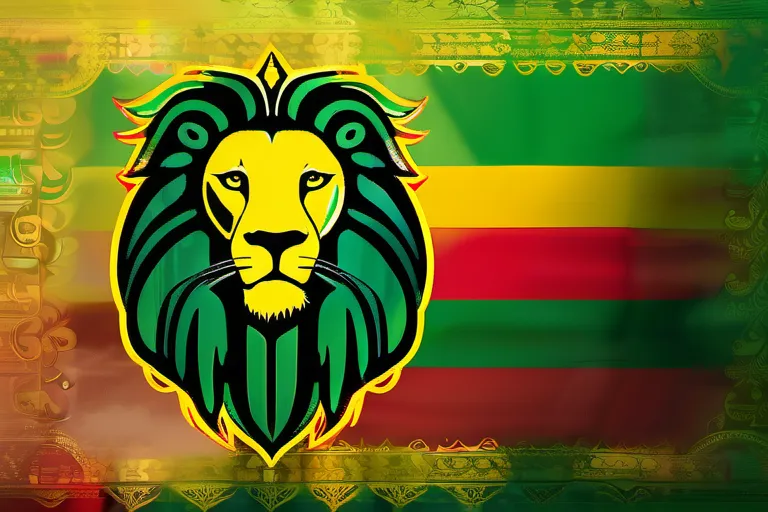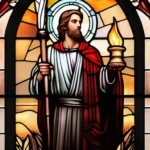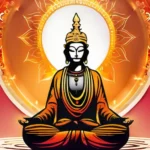Explore the history, beliefs, and culture of Rastafarianism in this detailed article.
Rastafarianism is a religious and social movement that originated in Jamaica in the 1930s. It is centered around the figure of Emperor Haile Selassie I of Ethiopia, who is considered by Rastafarians to be a living god. In this article, we will delve into the history, beliefs, and culture of Rastafarianism, providing you with a comprehensive understanding of this unique faith.
The Origins of Rastafarianism
From the Mountains to the World
The story of Rastafarianism begins in Jamaica, nestled between the Atlantic and the Caribbean, where it emerged as a response to colonial oppression and social injustice. Imagine a community grappling with the harsh realities of life under British rule. How did they find hope amidst such adversity? The seeds of Rastafarianism were sown on Garvey’s soil—a fertile ground for change.
In 1930, Emperor Haile Selassie I of Ethiopia visited Jamaica, igniting a spark that would reverberate globally. The crowning moment came when a young Jamaican man, Marcus Garvey, declared the Ethiopian monarch as the black man’s messiah. This declaration was not just a religious statement but a call to arms for black empowerment and liberation.
From then on, Rastafarianism became a movement that transcended religious boundaries; it was a cultural renaissance, a social awakening. Its followers believed in the divinity of Emperor Haile Selassie I, seeing him as a symbol of African pride and resistance against colonial powers. The ideology spread like wildfire through poetry, music, and everyday life—embodying the struggle for identity and dignity.
The movement didn’t just remain confined to Jamaica; it became a global phenomenon. In the 1960s, Rastafarianism found its way into Western consciousness, particularly in London’s Notting Hill, where dreadlocks, reggae music, and cannabis became symbols of rebellion against mainstream culture.
Now, as we look at the journey from humble beginnings to worldwide recognition, it’s clear that Rastafarianism has much more than a religious narrative. It is a profound exploration into what it means to be human in an often unjust world—a beacon of hope and resilience through its history.
Rastafarian Beliefs and Practices
Rastafarianism is like a vibrant river flowing through the spiritual landscape, bringing with it a message of peace, love, and unity. But what exactly does this faith entail? How do its core beliefs shape the lives of those who follow it?
At the heart of Rastafarianism lies a profound belief in the divine, often centered around the idea that Emperor Haile Selassie I is a manifestation of God. This belief isn’t just a religious dogma but an integral part of their daily lives, guiding their actions and decisions.
The Rastafarian lifestyle revolves around several key practices that reinforce these beliefs. One such practice is smoking ganja or marijuana, which many Rastas see as a spiritual tool to purify the mind and body. It’s not just about recreation; it’s an act of reverence for Jah (God) and a means to seek enlightenment.
Another significant practice is dreads, the natural afro hairstyle that has become almost synonymous with Rastafarianism. For many followers, dreds represent a natural connection to Africa, symbolizing freedom from oppression and a return to one’s roots. This hairstyle isn’t merely a fashion choice but a statement of identity and spirituality.
Music also plays a crucial role in Rastafarian culture. Reggae music, with its uplifting lyrics and rhythms, serves as a medium through which messages of truth, justice, and love are conveyed. Songs like Bob Marley’s “Redemption Song” encapsulate the essence of Rastafarian ideals, resonating deeply with those who seek to spread these values.
Through these practices and beliefs, Rastafarians strive to create a harmonious existence, one that reflects their commitment to unity. It’s as if they are weaving a tapestry, where every thread represents a facet of their faith, coming together to form a beautiful pattern of love and peace.
So, how does Rastafarianism influence those who embrace it? Does it transform them into a community bound by shared beliefs and practices? The answer lies in the lived experiences of its followers, who find solace and strength in their faith, navigating through life with purpose and passion.
The Role of Emperor Haile Selassie I in Rastafarianism
Imagine a world where a single figure becomes a symbol of hope, resilience, and divine leadership—such was the role of Emperor Haile Selassie I in Rastafarianism. Could it be that he truly represented the messianic figure prophesied in the Bible? Many Rastafarians believe so, seeing him as ‘Jah,’ or God, incarnate on Earth. How did this transformation come about?
In 1930, Ras Tafari Makonnen, later crowned Haile Selassie I, visited Ethiopia’s holy city of Harar. During his visit, he was greeted with the chant “Hail, Caesar!”—a phrase that would resonate deeply among Rastafarians. The event marked a turning point in the history of Rastafarianism, setting the stage for Haile Selassie I to become more than just a ruler; he became almost mythological.
Haile Selassie’s coronation as Emperor in 1930 was another pivotal moment. Many believe that the prophecy of ‘A black man shall be king and rule Jamaica,’ which is found in the Bible, was fulfilled with him. This belief fueled a wave of hope among oppressed Africans worldwide. For Rastafarians, his coronation was not just an event but a divine appointment, affirming that he was the promised deliverer who would liberate them from their earthly and spiritual chains.
During his reign, Haile Selassie I made significant strides in modernizing Ethiopia and promoting its culture. However, for Rastafarians, it was more than political achievements; it was a divine mission. His visits to the Holy Land and his efforts to unite Africa were seen as signs of his special role. The 1963 “Visit to Ghana,” where he met with Kwame Nkrumah, the first president of Ghana, further solidified his status in Rastafarian lore.
Haile Selassie’s life and reign hold a profound significance for Rastafarians. His image adorns countless murals, posters, and t-shirts, symbolizing not just an emperor but a living god. The idea that he would return to Ethiopia as promised in the Bible (often quoted from Revelation 1:5) continues to inspire hope and faith among adherents.
His legacy is so powerful that even his death on September 27, 1975, did not diminish his status. For many Rastafarians, he lives on in their hearts as a symbol of liberation and unity. How can one man hold such a position of reverence and respect? It’s a question that touches the very core of Rastafarian belief.
Rastafarian Culture and Music
Imagine a world where music, spirituality, and social activism intertwine seamlessly—where every note of a song becomes a call to action, and every melody carries the weight of history and hope. Welcome to Rastafarian culture and its rich tapestry of musical expressions, particularly reggae and dancehall.
Reggae, born in Jamaica during the 1960s, is more than just music; it’s a voice from the heart, resonating with the struggles and triumphs of the Jamaican people. Think of it as a metaphor for freedom, speaking to the soul through its rhythmic beats and poetic lyrics. How can we truly understand the depth of reggae without delving into the lives of artists like Bob Marley or Jimmy Cliff? These musicians were not just entertainers but messengers of Rastafarian teachings, spreading love, peace, and unity across the globe.
Similarly, dancehall music has evolved over time to reflect the vibrant and dynamic culture of Jamaica. Its beats are energetic, its lyrics often raw and honest, painting a picture of the realities and dreams of those who live on the island. Dancehall, like reggae, serves as both an escape and a mirror, allowing listeners to connect with their own experiences and emotions.
But why stop at just the music? The cultural practices associated with Rastafarianism offer a deeper understanding of its identity. For instance, the wearing of dreadlocks is more than a fashion statement; it’s a symbol of naturalness and resistance against societal norms imposed by colonial powers. Each lock represents a strand of truth and freedom, woven together to form a powerful statement against oppression.
From ganja use (which is seen as a sacrament in Rastafarian practice) to the celebration of important cultural events like H’,”); echo $text; ?> “`html
Dreadlocks, then, are not merely decorative but carry profound spiritual and symbolic meaning. They remind us of our roots, our connection to nature, and our commitment to living according to the principles of Rastafarianism.
Moreover, Rastafarian festivals such as Emancipation Day (formerly known as Emancipation Day) celebrate the end of slavery and are a time for reflection on personal freedom and social justice. These events bring communities together, fostering unity and solidarity in the face of historical struggles.
In essence, Rastafarian culture and music offer a window into a world where spirituality, activism, and joy coexist. By exploring these elements, we gain insight not only into the lives of those who practice Rastafarianism but also into broader themes of human struggle, resilience, and hope.
“`
The Impact of Rastafarianism on Society
The impact of Rastafarianism on society has been profound and multifaceted, transcending its origins within Jamaica to resonate globally. How can we truly appreciate the movement without delving into how it has influenced politics, culture, and social activism? The Redemption Song, a powerful anthem by Bob Marley, speaks of freedom and liberation—a theme that Rastafarianism champions with unwavering conviction.
In Jamaica, Rastafarianism has played an integral role in shaping the national identity. It’s not just a religion but a way of life that promotes unity, love, and self-determination. By advocating for social justice and equality, Rastafarians have inspired countless individuals to question the status quo. How many have found strength and inspiration through their music, literature, and activism? The influence is evident in movements across the world where Rastafarian principles are applied to address societal issues.
Across the globe, Rastafarianism has left an indelible mark on various cultures. In New York City, for instance, the presence of a large Rastafarian community has enriched local arts and music scenes. The vibrant colors, unique fashion, and spiritual practices have become integral parts of the city’s cultural fabric. How many tourists visit Jamaica or attend reggae festivals without recognizing the impact of this movement? It’s more than just a style; it’s a philosophy that continues to challenge and inspire.
The global spread of Rastafarianism has also led to the establishment of various organizations dedicated to promoting its teachings. From schools in London to community centers in New Delhi, these institutions have become hubs for education, cultural exchange, and social engagement. How do these communities impact their local areas? They often serve as bridges between different cultures, fostering understanding and dialogue. The Rastafarian emphasis on natural living and environmental stewardship has also influenced sustainable practices around the world.
While the positive impacts are undeniable, it’s important to acknowledge the challenges faced by Rastafarians in their quest for acceptance and recognition. Despite its global influence, the movement still faces skepticism and misunderstanding in many parts of the world. How can we bridge these gaps and ensure that the rich traditions of Rastafarianism continue to thrive? The journey is ongoing, but every step forward brings us closer to a more inclusive and enlightened society.
Contemporary Rastafarianism: Challenges and Opportunities
Contemporary Rastafarianism: Challenges and Opportunities
How has the world changed for Rastafarians in recent years?
The journey of Rastafarianism from its roots in the 1930s to a global movement today is one of resilience and adaptation. But as the world evolves, so too do the challenges faced by contemporary Rastafarians. From the rise of digital technology disrupting traditional practices to the political and social changes reshaping society, Rastafarians must navigate new landscapes while holding onto their core beliefs.
Is the internet a friend or foe for Rastafari?
The advent of the internet has brought both blessings and curses. On one hand, it offers a vast platform to spread messages of peace and love, as well as organize community efforts globally. Yet, the same digital world can also be a source of misinformation and spiritual confusion. How do Rastafarians balance their traditional practices with the fast-paced, sometimes contradictory, nature of online interactions?
Moreover, the political climate in Jamaica and beyond has seen shifts that challenge Rastafarian values. From economic policies affecting marginalized communities to social issues such as police brutality, Rastafarians find themselves at the intersection of these complex dynamics.
What opportunities does this present for Rastafarianism?
Despite the challenges, there are also exciting possibilities. The global spread of Rastafarianism means that it can reach new audiences and gain broader support. Engaging with younger generations through social media and modern marketing strategies could help revitalize interest in Rastafarian culture and philosophy.
Can Rastafarians use their unique perspective to influence positive change?
Their emphasis on social justice, environmental awareness, and spiritual growth can provide a powerful framework for addressing current global issues. By leveraging these values, Rastafarians have the potential not just to survive but to thrive in an ever-changing world.
Conclusion
 Rastafarianism is a complex and multifaceted religion that continues to evolve today. By understanding its history, beliefs, and cultural practices, we can gain a deeper appreciation for the richness and diversity of human spirituality.
Rastafarianism is a complex and multifaceted religion that continues to evolve today. By understanding its history, beliefs, and cultural practices, we can gain a deeper appreciation for the richness and diversity of human spirituality.











